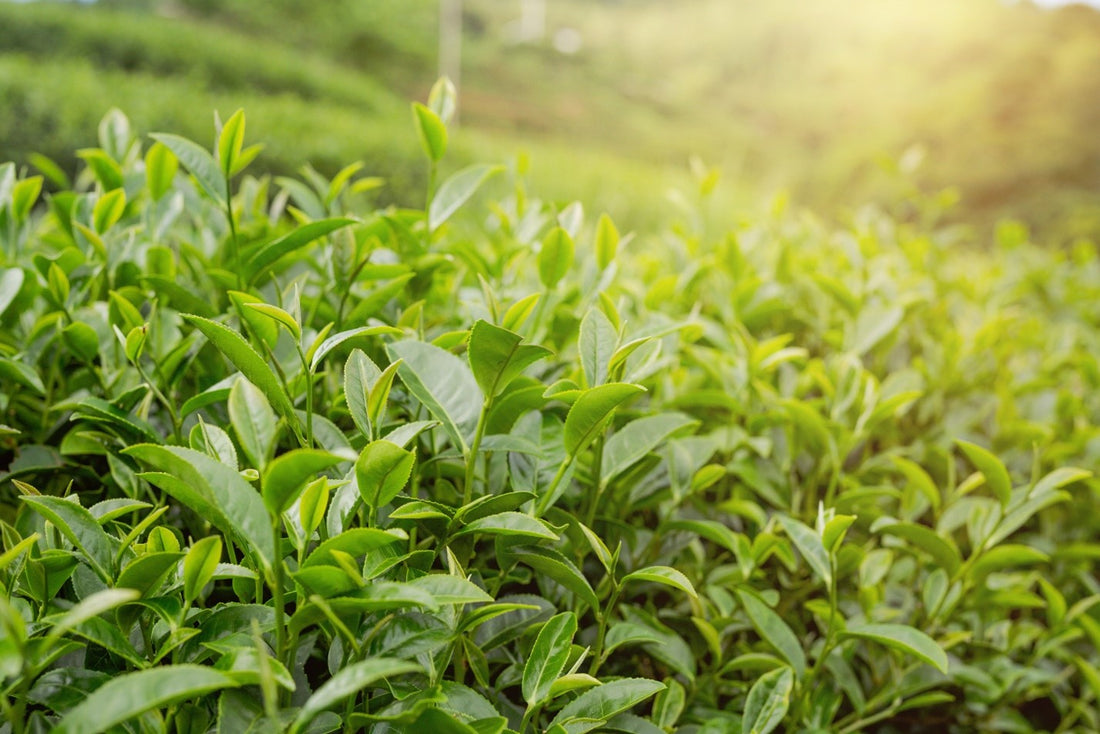
Single Origin Matcha vs Blended: What's the Difference?
Share
The term single origin has become ubiquitous with superior quality amongst envrionmentalists, professional and home chefs, and third-wave connoisseurs. It often precedes popular crops like cocoa beans, coffee beans, and tea and is perceived as a selling point. When it comes to tea leaves, is single origin really better quality? In this post, we'll break down the differences between single origin and blended matcha.
First of all, what does single origin actually mean? And how did it gain superior status?
Single Origin: The Definition
Single origin means a crop used in the final product comes from a single location. However, defining a single "location" is surprisingly broad. When it comes to matcha, which is made from green tea leaves, single origin tea leaves can come from a family farm, a prefecture, or the entire country. Some matcha will be labelled by region, as in Uji matcha or Fukuoka matcha, but single origin matcha is not required to be labelled like this.
The reason why single origin grew in popularity has to do with ethical and environmental concerns. Traceability is becoming increasingly important for certain consumers and buying single origin products makes tracking where their ingredients come from more straightforward.
Advantages of Single Origin Matcha

The quality of matcha is derived from a number of factors. Much of it has to do with where the tea leaves are grown. Like wine, terroir is the butter to the bread—or this case, matcha adzuki bread. A terroir, or growing region, includes factors like the location's micro-climate and soil. These things remain pretty consistent, so you know what you're investing in. Certain regions like Uji and Kagoshima are known to produce better flavours.
The advantage of single origin matcha is that you can select tea leaves from reputable regions in Japan like Uji, Kagoshima, and Aichi and it'll give you a fair indication of how the final matcha will turn out.
Cons of Single Origin Matcha
The main disadvantage of using single origin matcha is the lack of control and consistency. Although you can place a bet on a specific terroir producing relatively good quality matcha, you cannot control every single growing season or batch. If there happens to be an off-season, and you only use leaves from that one spot, you'll be left with a lower quality batch. With single origin matcha, you can expect to get single dimensional flavour across batches. For example, if a particular batch of matcha comes out too astringent, there's nothing you can do to 'balance' out the bold flavour.
Top Growing Terroirs in Japan

Japan is known for its matcha, but did you know that there are only a handful of regions that contribute to the success of Japan’s production?
These are the top 5 regions for matcha production:
#1. Shizuoka: The largest tea producing area in Japan.
#2. Uji, Kyoto: Also known as the birthplace of matcha. The terroir is optimal for growing tea leaves.
#3.Nishio, Aichi: One of the most popular growing locations of matcha. It’s popularity makes it sought after and more expensive.
#4. Yame, Fukuoka: Located on an island on the southwest end of Japan. Although there’s a decent amount of matcha grown here, it’s more famous for its loose leaf green teas (Sencha, Gyokuro)
#5. Kirishim, Kagoshima: The second biggerst Japanese tea producing prefecture after Shizuoka.
What is Blended Matcha?
Before we get into blending matcha, we must understand what a tea cultivar is. A tea cultivar is a variation of a plant specifically bred and grown by humans. Or in other words, "cultivated variety." Humans have used this technique dating back centuries to when agriculture first took off. The reason being they wanted to produce more of the crops with the most attractive traits. Highly coveted traits might be disease or cold resistance. Farmers would combine the attractive traits of one tea plant with features from another to produce a cultivar. As a result, different variations of the same plant will give different characteristics in terms of flavour.
Blended matcha uses the leaves from two or more tea cultivars. The art of blending tea takes years, even decades, to master. The blending itself is performed by a tea master who will taste numerous teas from different farms and make a selection based on the desired flavour. The benefits of tea blending are consistency in flavour. When you see different flavour notes displayed on a matcha tin, it likely means it's been blended to give that exact flavour profile every time. Inherently, blended tea is a more laborious process that requires the expertise of the tea master. However, the result is more robustness, depth, and consistency in the final product.
Blended Matcha: What to be Cautious Of

Be wary of companies that 'blend matcha' using leaves from different countries or lower-quality terroirs. This will produce a muddy-coloured and less nutritionally potent product. Companies do this to cut costs, which makes the cost of matcha a pretty reflective indicator of its overall quality. Authentic matcha should be made from tea leaves that are 100% grown and blended in Japan.
Domatcha is one of the few North American matcha companies that exclusively uses 100% Japanese-grown tea leaves in their matcha.

In conclusion, if you're looking for high-quality matcha, don't let "blended" scare you away. Blended matcha often has a more balanced profile because it's been thoughtfully curated to have complimentary characteristics from each chosen varietal. Blended matcha can still come from one region. Single origin vaguely describes where the tea leaves are grown, but it does not necessarily mean it will produce the best tasting and highest-quality matcha. The term itself helps people determine where their matcha is coming from.